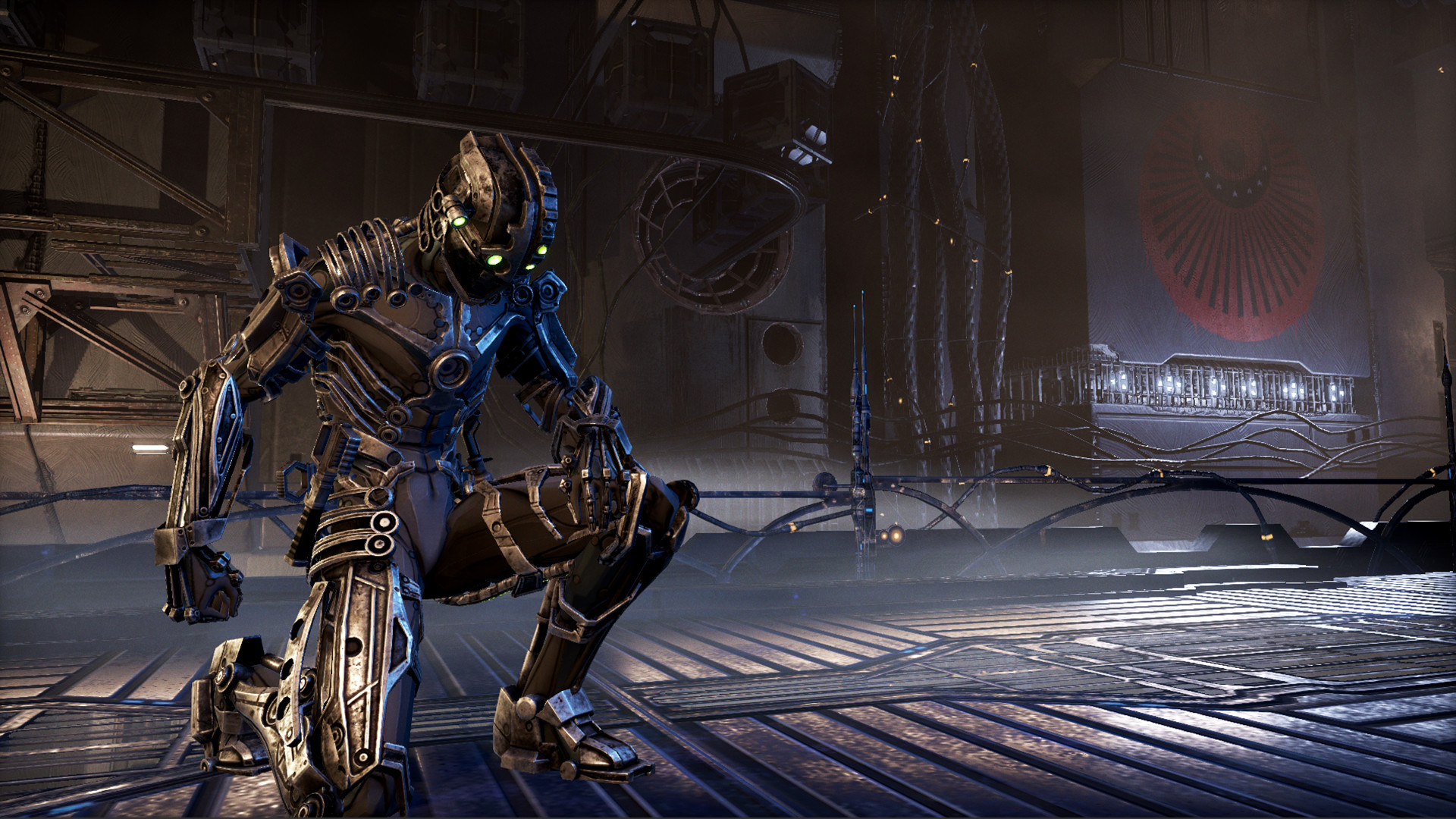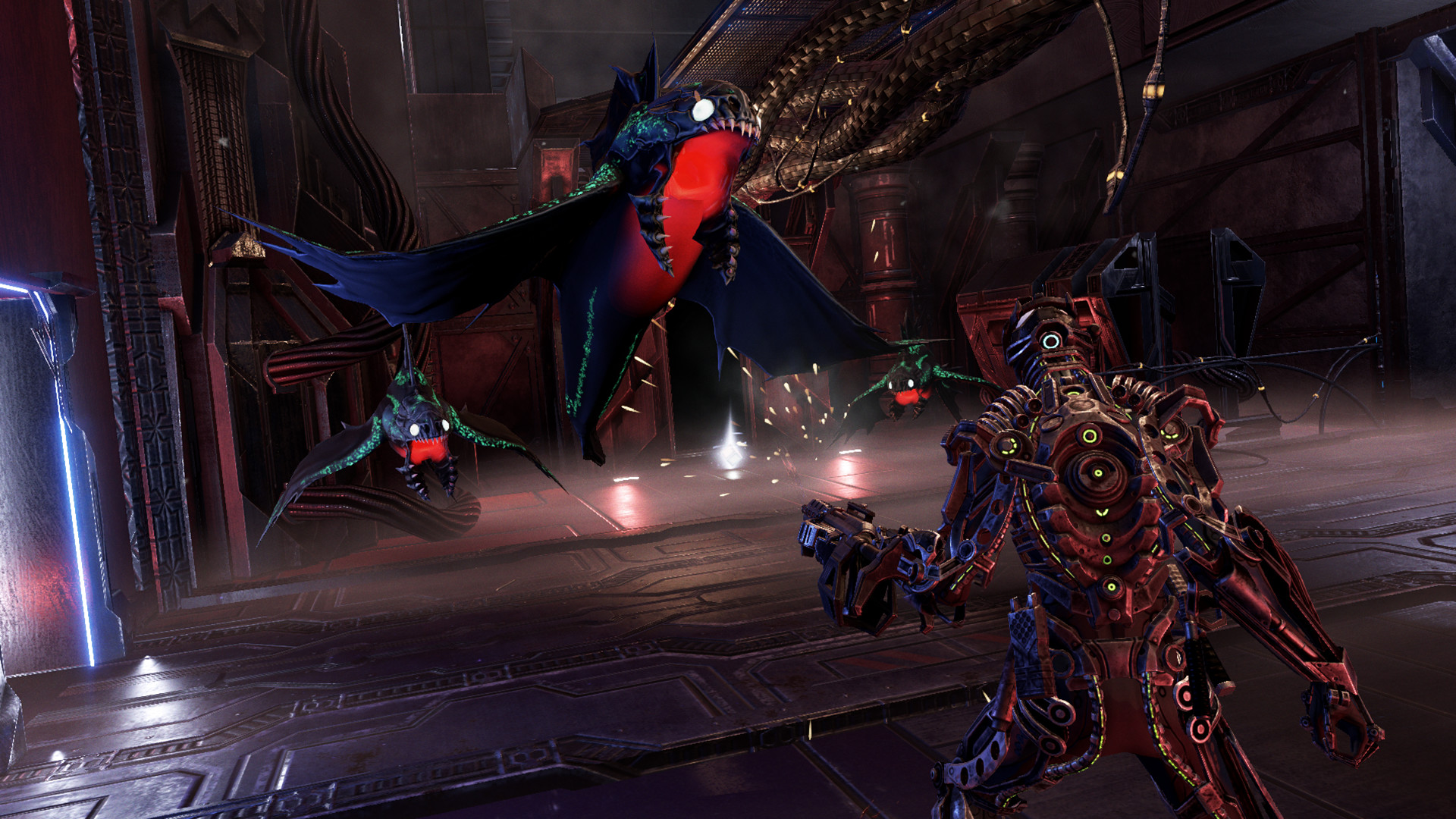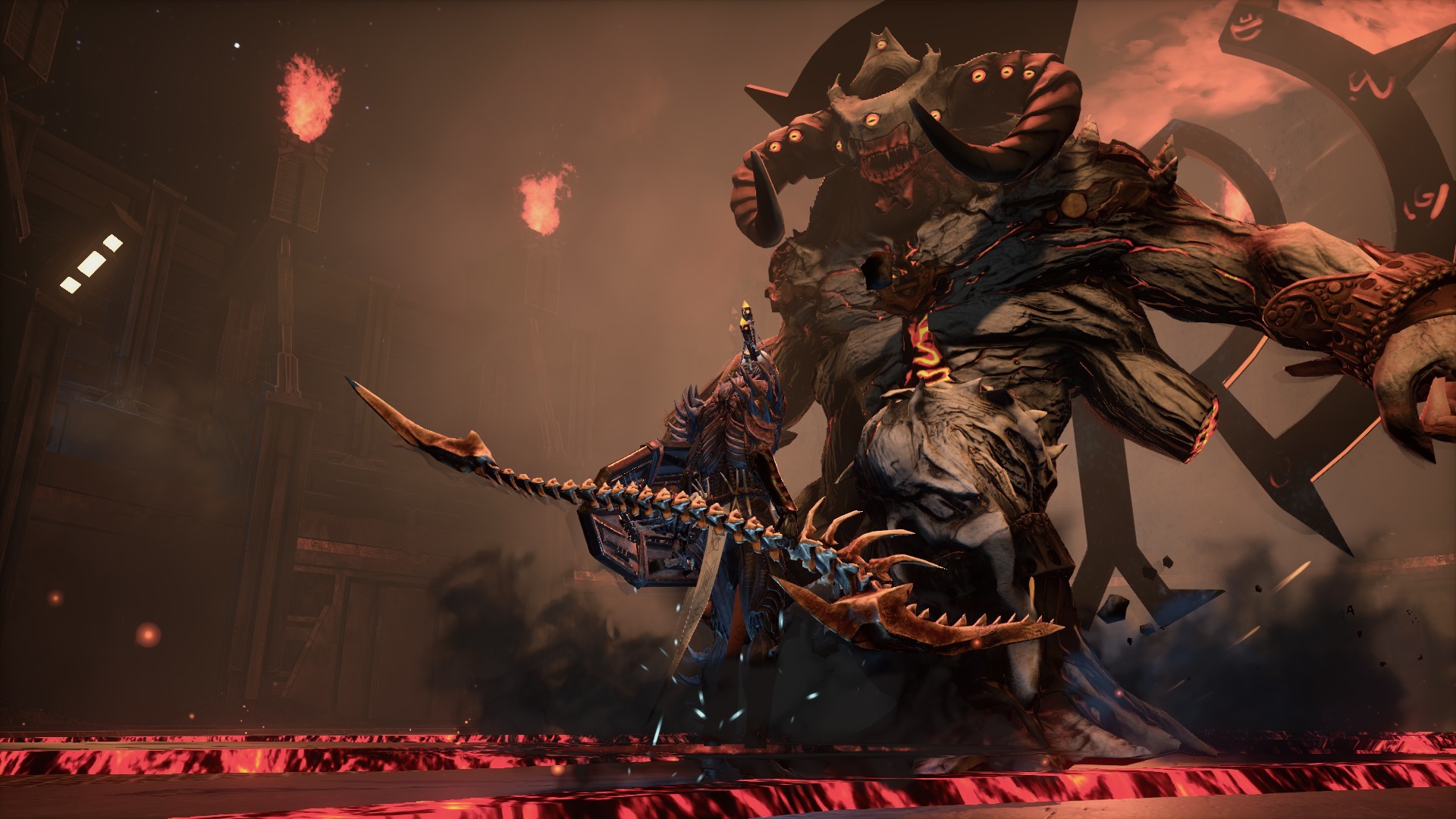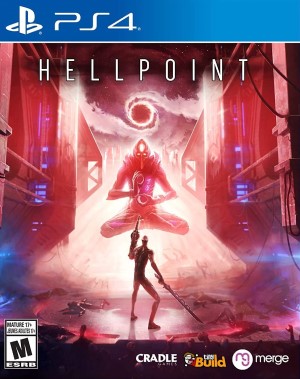
In spite of recent delays, quite a few people have got their eyes on the upcoming sci-fi RPG Hellpoint. Developed by Cradle Games, a new development house created by veterans of various AAA studios, the game promises a unique new spin on an established format, with a science fiction setting that is relatively rare for Soulslike games- which is what it purports to be. Given the game’s rich premise, as well as the makers’ track record, there is a lot we wanted to talk to Cradle about, from their approach to level design to how they are choosing to tackle storytelling, and what their thoughts on the tech of the upcoming next-gen consoles are. We recently got a chance to converse about these things and more with Cradle Games’ creative director Matt Boudreau and technical director Marc-André Jutras. You can read our conversation below.
"As soon as you start the game, there is no hand holding, no interruption, no cut-scene."
While many developers tend to give players a taste of their upcoming games with demos or betas, for Hellpoint, you instead chose to release The Thespian Feast, which serves as a standalone chapter in the same universe. How did you land on this decision, and what were your primary goals and expectations as far as The Thespian Feast, in particular, was concerned?
Boudreau: It seems to us a good opportunity to make the demo as part of the lore so that playing it actually reveals information that complements what you can find in the game. It was also fun for us to hide a bunch of hints and secrets in it that should surprise the players once they hop in the final game, as the state of the station is not exactly the same between the demo and the final game.
Endgame content is something that many players consider vital in games, especially mechanics-focused RPGs such as Hellpoint– what can you tell us about what the game will deliver in that area?
Boudreau: “New game plus” is weaved into the lore of the game, that’s something I cannot spoil too much about. But we balanced stats in a manner that you can new game plus infinitely, and it’s near impossible to find out the real plot of the story in a single playthrough. It’s also one of the main reasons why we built the level design that way, you first playthrough might give the impression that there is a linear order to explore, but players who enjoy finding secrets will discover there are dozens of ways to complete levels, and the order you complete them affects which enemies are going to dominate other areas of the station.
What’s the approach you’ve taken to storytelling with Hellpoint? While some games tend to go for a more direct approach, others like to rely on lore and environmental storytelling- what sort of a balance does Hellpoint strike between the two?
Boudreau: It’s a storytelling technique that we’ve been wanting to try for a long time. As soon as you start the game, there is no hand holding, no interruption, no cut-scene. Some find it a little disconcerting while others enjoy the sense of isolation and immersion that it creates. It’s up to the player to theorize about the events, looking at posters, translating the alphabet we created, reading blood messages on the walls, etc. From a mechanical standpoint, nearly everything that you accomplish in the game contributes to the main objective, so there is never really a bottleneck, there is always another place to explore so you can come back later.
From everything that we’ve seen of Hellpoint so far, it seems like the majority of the game is set on the Irid Novo space station- with that in mind, is this an environment players can expect to grow very familiar with, not just in terms of its narrative background, but also in terms of design and layout?
Boudreau: Indeed, there is one small vague map plan somewhere on the station that tells you roughly where an area is in relation to another, but we’re relying on methods of loops, foreshadowing and landmarks to build a mental map inside the player’s mind. It’s quite satisfying when you’re able to find your way around like a local, and that fact plays a major role when you have a particular character build in mind, as you need to know where to find the equipment that you’re looking for. On top of that, we’ve put so many secrets everywhere that no matter how much you may think you know the station, there always seems to be another surprise hidden in plain sight.
"The main purpose was to enhance exploration and level design verticality while adding a new axis to combat. It gives the game a lot of its own style and a bit more dynamism to the action. But the game remains at its core a combat action game, so platforming is never mandatory to progress, it’s always an interesting way to wander off the beaten path."
How big of an environment is the space station, and how much variety can we expect from it in terms of visuals and design?
Boudreau: Irid Novo is several kilometers wide and high and you can spend dozens of hours in each area and there are quite a lot of them. We try to vary from close claustrophobic dungeons to massive mega cities, you can take a trip outside the station as well given you own a space suit. The local cohabits with another species that are all about transhumanism and golden pyramids, while other areas are totally infested with funky colors. There is also a huge park entirely made of artificial vegetation but watch out for the artilleries at the other end.
Hellpoint looks to be placing more of an emphasis on platforming than games of its particular style usually do- can you tell us about how you landed on this approach during development, and what you would say this adds to the experience?
Boudreau: The main purpose was to enhance exploration and level design verticality while adding a new axis to combat. It gives the game a lot of its own style and a bit more dynamism to the action. But the game remains at its core a combat action game, so platforming is never mandatory to progress, it’s always an interesting way to wander off the beaten path.
What’s Hellpoint’s approach to level design? Soulslike games often tend to go with an interconnected maze of connecting areas with metroidvania elements- is that something Hellpoint is going for as well?
Boudreau: Yes, level design was built to constantly spark curiosity and foster exploration. The game can be completed after seeing barely half of the game world and it was important for us for that “no hand holding” philosophy, that sentiment that you missed something and there is always more stuff hidden behind the curtain. The main principle was centered around planning a character build: if you’re looking for a heavy fighter you’re going to want to explore the station in a different order than if you want to make a caster or an agile warrior, etc.
Roughly how long will an average playthrough of Hellpoint be?
Boudreau: In theory you can reach the end in 15 – 20 hours but what we see so far is that this is on average how many hours a player spends in a single environment, because of the way that we designed exploration and secrets.
What are the docked and undocked resolution and frame rate of the Switch version?
Jutras: Currently both are at 720p with a locked 30 fps. We are looking into more potential optimizations.
With next-gen approaching, have you given any thought to releasing Hellpoint for the PS5 and Xbox Series X as well?
Jutras: Would be a lie to say we didn’t at least think about it. However, right now our focus is on releasing the game on time. The next-gen is still a bit too far for us to take any decision just yet.
"In theory you can reach the end in 15 – 20 hours but what we see so far is that this is on average how many hours a player spends in a single environment, because of the way that we designed exploration and secrets."
The PS5 features an incredibly fast SSD with 5.5GB/s Read Bandwidth (Raw). This is faster than anything that is available out there. How can developers take advantage of this and what will it result in?
Jutras: Is it faster than anything available, isn’t that normal speed for a PCIe 4.0 NVMe SSD? Honestly, it’s great to finally see some good read/write speed on consoles too. However, I would expect pretty much all the physical copies of games to now require full hard drive install. An optical disk is sooooo much slower. Would have been cool to see NVMe “cartridges”. Maybe next time!
What I’m looking forward to seeing with the PS5 SSD is if they will have a custom-made controller that sorts data in a more video-game oriented fashion. For example, video game data is placed in a specific way on an optical disk for maximum loading speed. My guess is, there might be a way to place continuous large packages of data in a SSD to speed up loading.
What will be interesting to see is perhaps some developer trying to get rid of loading screens. We might see more interconnected worlds, more gameplay related transitions or some interesting effects.
The PS5 features up to 10.3 TFLOPs whereas the Xbox Series X has 12 TFLOPs. There is a difference there, but do you think such a difference matters in the long run?
Jutras: To be honest, probably not. Previous consoles always had this kind of difference. Especially the PlayStation, which always tended to have tweaks and hardware specific accelerations.
Especially with today’s GPU; how are those FLOPS used? Any dedicated physics cores? What about audio processing? Neural network? And let’s not start on raytracing! Doesn’t matter if you have twice the FLOPS, but can only use half of them, right?
Speaking of next-gen hardware, something else that the PS5 and the Xbox Series X are both going to have is a Zen 2 CPU- how big of a leap is it over current-gen hardware in your view, and how is it going to help development?
Jutras: Zen 2 is a monster of a chip, doesn’t heat much and isn’t using much power. It’s a massive leap just compared to Zen 1/Zen+, let alone the previous console generation. It has been a wind of fresh air having back some valid competitions between AMD and Intel. The winners out of this are the consumers. Looking forward to what Intel will come up with in a year or two.
It might help a lot for development when it comes to performance profiling. Most devkits are very expensive because they need additional horse-power to look over the main processes and analyze them. This always has a huge impact on the framerate; you never get a good clear picture and have to do some mental gymnastics to figure out what the framerate would be without the profiling. With so much more IPC and much higher frequency, we finally might have enough leg room to do real time profiling without impacting the game too much.
What are your thoughts on the Tempest engine on the PS5 and how do you think it will impact audio on PS5?
Jutras: 3D audio has been around for a long while. You could have it running on existing consoles easily… but not a lot of game does, because it pretty much takes too much CPU time. Until now, it had to run software.
But now it’s hardware accelerated – see my comment about how PlayStation hardware tends to have special things like that. It means there’s no reason not to use it. For us, it will most likely mean PS5 might sound better with the flick of a switch. Assuming you have the audio system to handle that. Also means we could have a CPU thread freed from heavy audio computation! Even if both consoles had exactly the same CPU, having a specific task being hardware accelerated can be a huge boost for the CPU.
"Especially with today’s GPU; how are those FLOPS used? Any dedicated physics cores? What about audio processing? Neural network? And let’s not start on raytracing! Doesn’t matter if you have twice the FLOPS, but can only use half of them, right?"
Xbox Series X has almost full backward compatibility, all the way down to the original Xbox whereas the PS5 is only backward compatibles with the PS4. As a gamer, what are your thoughts on this?
Jutras: As a gamer, it’s hard to figure out what’s the big deal with this. How come PS5 isn’t backward compatible with PS4, 3, 2, 1. If I can find some emulator for all those, and the new consoles are as powerful as a good gaming PC, then there’s no reason for all those games to run, even with glitches. I wish they could just find a way to deal with it and just cover everything, even if not perfectly.
As a developer however, I can see where some legal stuff could get a bit blurry, especially if the goal is to have those older gamers sold in some stores. Some companies don’t exist any more and licenses of those titles might not be so easy to figure out. I also understand that older consoles might have some form of hardware DRM that could prevent newer consoles from reading older disks.
To be honest, I just wish backward compatibility wasn’t a novel thing and just an expected feature, covering all titles.
What are your thoughts on the Xbox One X’s Velocity architecture and how will it make development easier on it?
Jutras: I’m not 100% sure on what exactly it will mean. From Microsoft; “It consists of four components: our custom NVMe SSD, a dedicated hardware decompression block, the all new DirectStorage API, and Sampler Feedback Streaming (SFS).”
My guesses are, since I have no inside info on this, they are going to have a custom PCIe 4.0 NVMe SSD – with a custom controller? – but with dedicated hardware decoding features. Pre-decompression of graphical assets? That could give quite a boost to loading time, especially if that decoding chip can send data directly to the GPU instead of passing by the CPU first. Considering they are using unified memory, that’s not impossible.
My second guess as to what this means is, virtual memory? Until now in the current consoles, if you run out of memory, too bad the game crashes. Notice how that doesn’t happen on PC anymore, unless you run out of VRAM or really eat all the RAM on a single process… and even then, since newer GPU API, the game can dynamically unload assets based on what the player sees on screen. Virtual memory for gaming is hardly a valid option with old spinning hard drives, but totally a possibility with a good NVMe SSD.


















